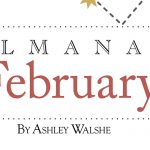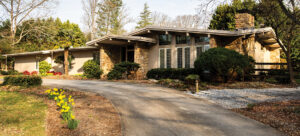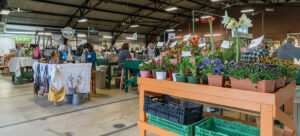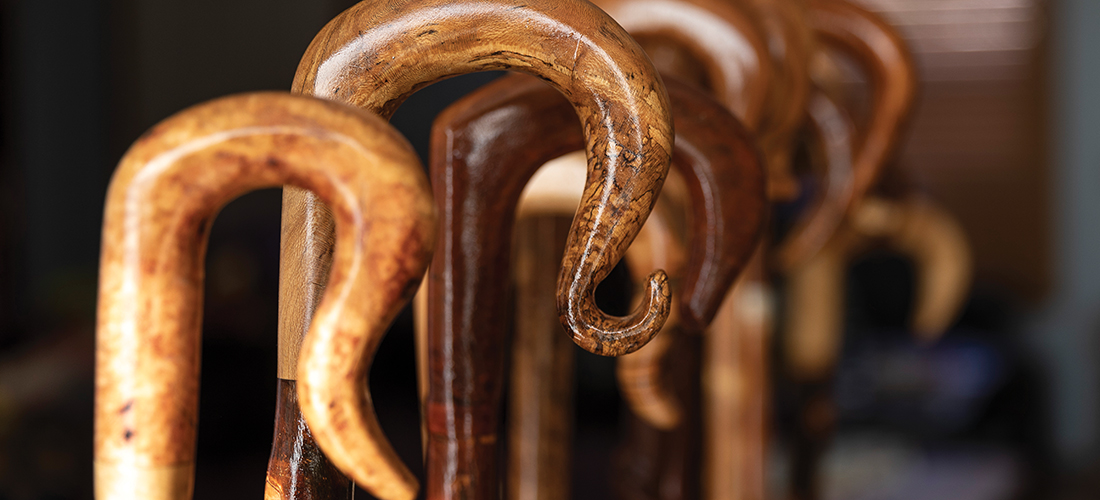
How Englishman John Broadhurst walks his talk with art that harks to home
By Maria Johnson • Photographs by Bert VanderVeen
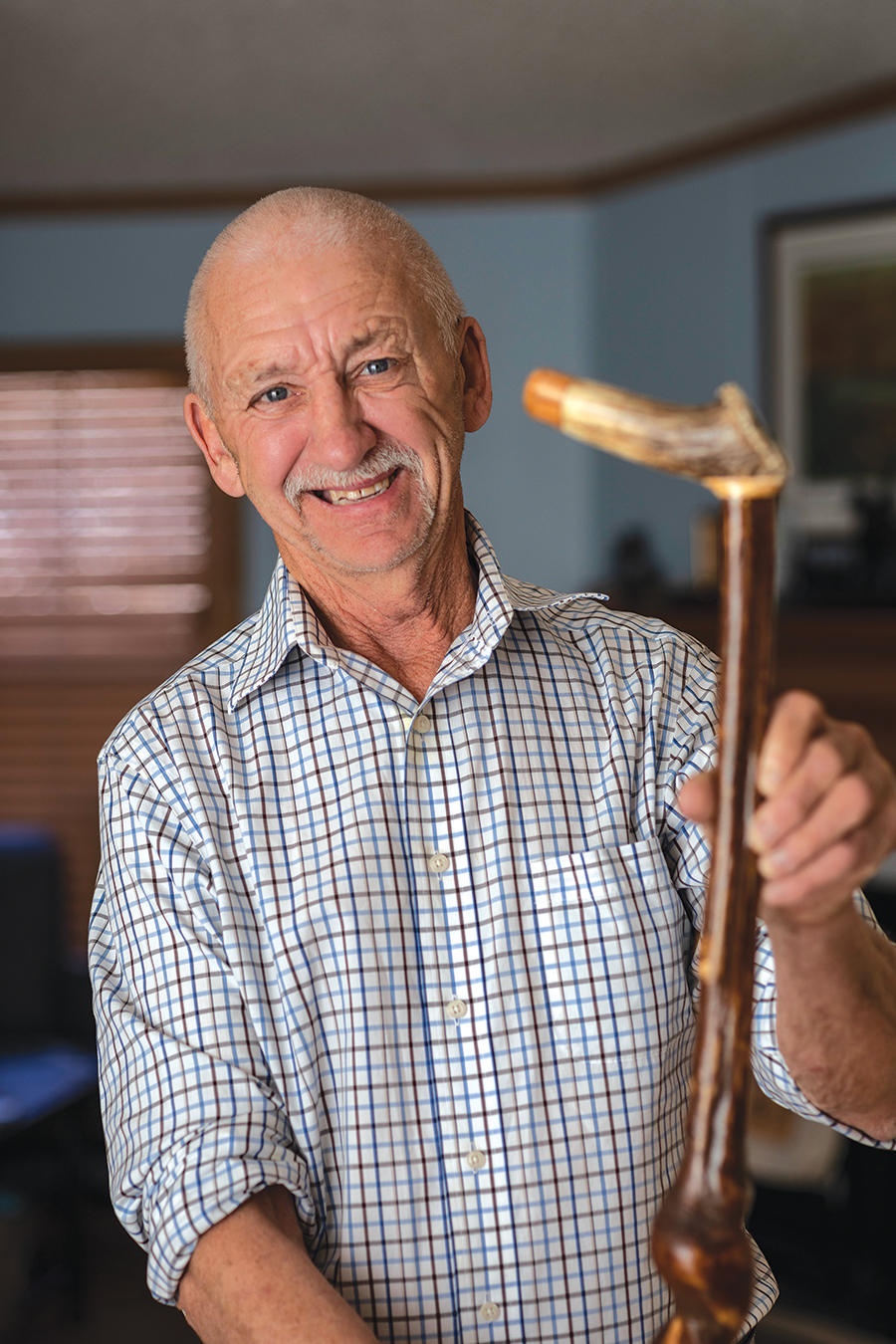
Pick a special stick and tell about it?
John Broadhurst nods and steps to a rack bristling with walking sticks that he has hewn by hand. He heaves one up and catches it midair. The staff is ash, the rigid stuff of baseball bats, but this branch is way slimmer than a Louisville Slugger, and it still wears the tree’s dove gray bark, lightly varnished. The stick’s handle, warm with hues of coal and butter, is wrought from ram’s horn, worked into a cursive “n” and buffed to a high gleam.
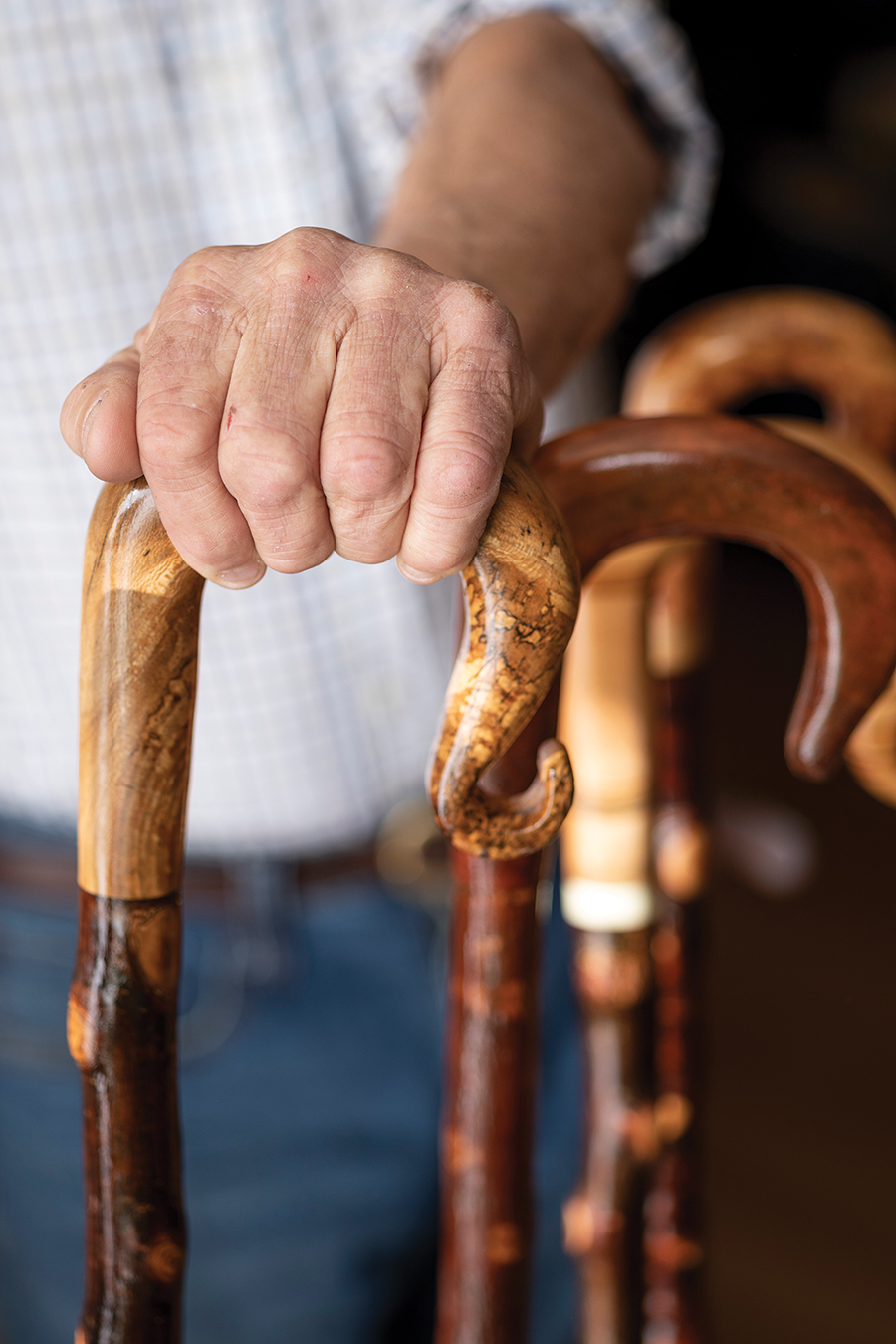
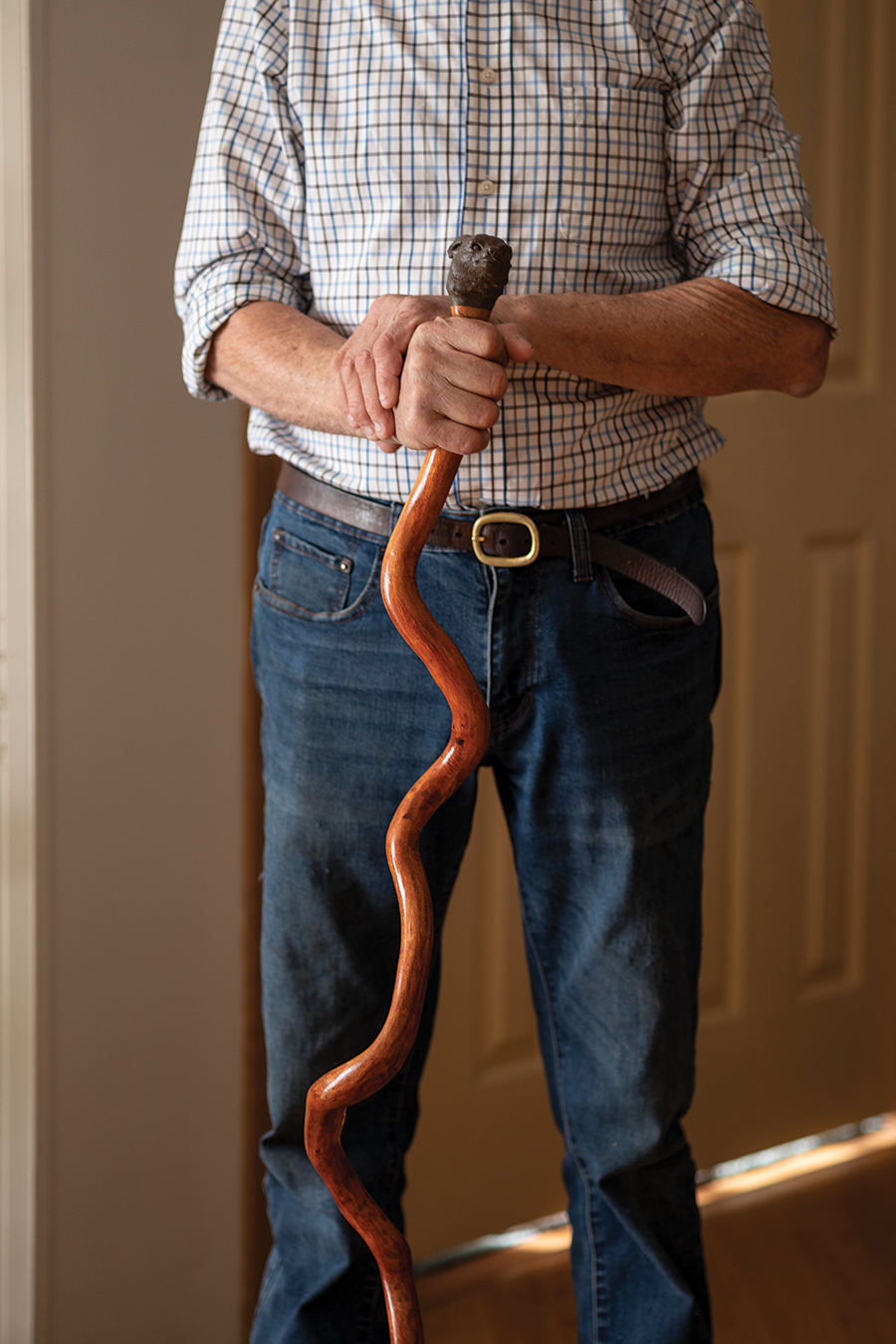
“It’s a big thing to make a ram’s horn handle in England. It’s a common thing for shepherds,” says the 74-year-old Broadhurst, whose British accent shrouds his words like the winter fog of his hometown, the western port city of Liverpool. His mother often put him on a train headed due east, to a station near her parents’ home in the lamb-dabbed hills of Lincolnshire.
When his fox-hunting uncles rode to the hounds, young John followed on a bike, pedaling furiously over the hills, cementing with sweat and a pounding heart the joy of being outside, of moving through the open air whether by horse or by bike or — the most common means — by foot.
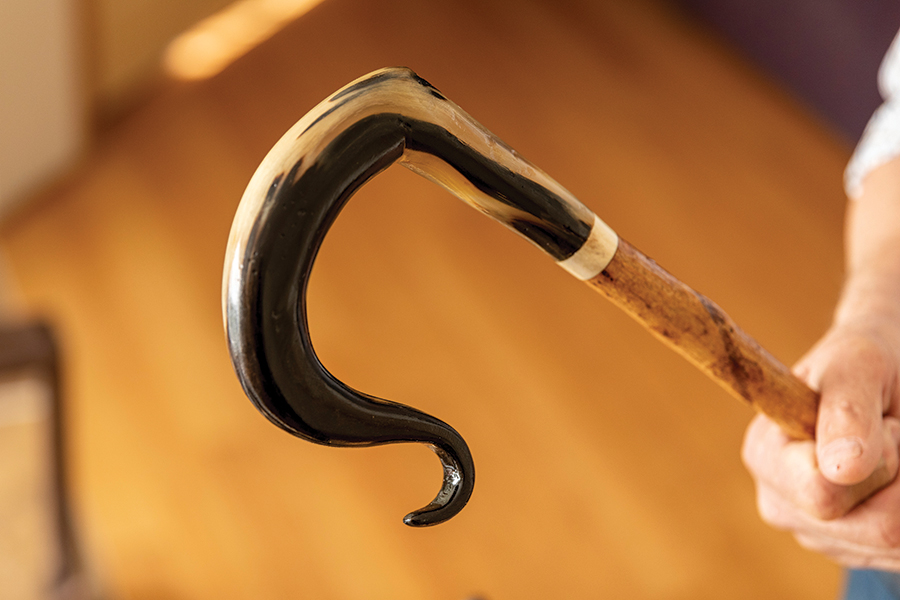
Then and now, he says, most people in the countryside carry a chest-high stick, the flag of a culture built on walking. “You go to these farm markets, and I’d say 95 percent of them have a stick. It’s a way of life, and it helps you so much,” he says.
Broadhurst demonstrates by centering a stick at his sternum and leaning over it: When chatting with friends, he says, you can use the stick as a kickstand to take some weight off your feet.
He thrusts the stick forward, planting it as a cross-country skier might. When going uphill, you can stab the incline and pull yourself up.
He eases back the top of the stick: Going downhill, you can brace yourself against gravity.
He jabs at imaginary teeth, knee high. If an aggressive animal comes at you, you have a weapon.
“Your stick is a companion as well, you know,” says Broadhurst, who’s as spare and straight as one of his canes. “You got your dog and your stick, and you can go where you like, you know what I mean?”
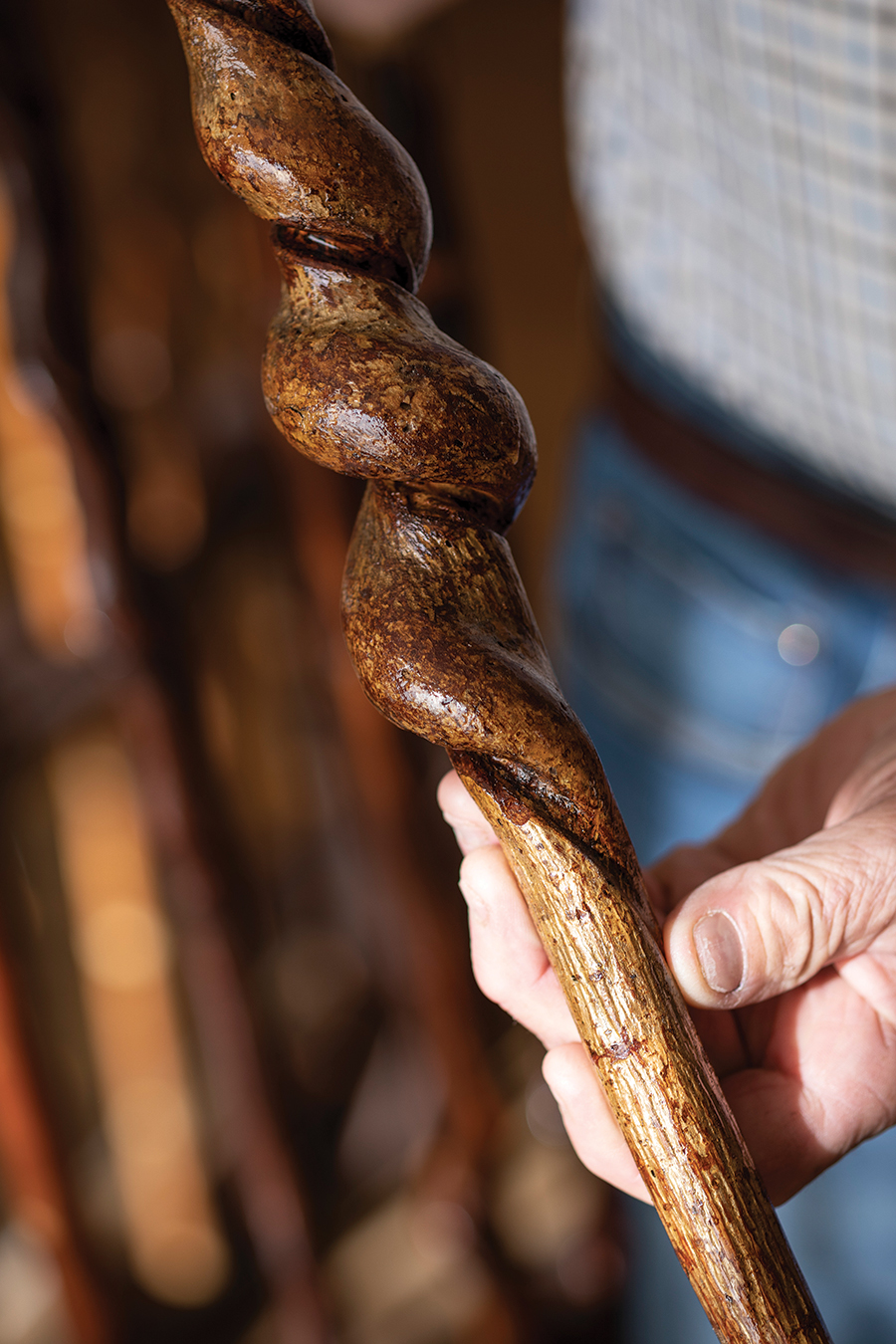
He worked city jobs as a teen, learning stone craft on construction sites before yielding to his boyhood love of the countryside. A professional terrierman, he followed fox hunters in a Land Rover, carting the Jack Russell terriers that flushed quarry from their burrows, a practice that’s now illegal. He weathered winters by sorting and shaping the dried hardwood branches that he’d sawed off a couple of autumns earlier when the leaves and sap were down. He developed an eye for spotting straight segments, about five feet long and as thick as a man’s thumb, still live on the trees and often spiraled with still-green honeysuckle vines.
Blackthorn.
Hazel.
Crabapple.
Oak.
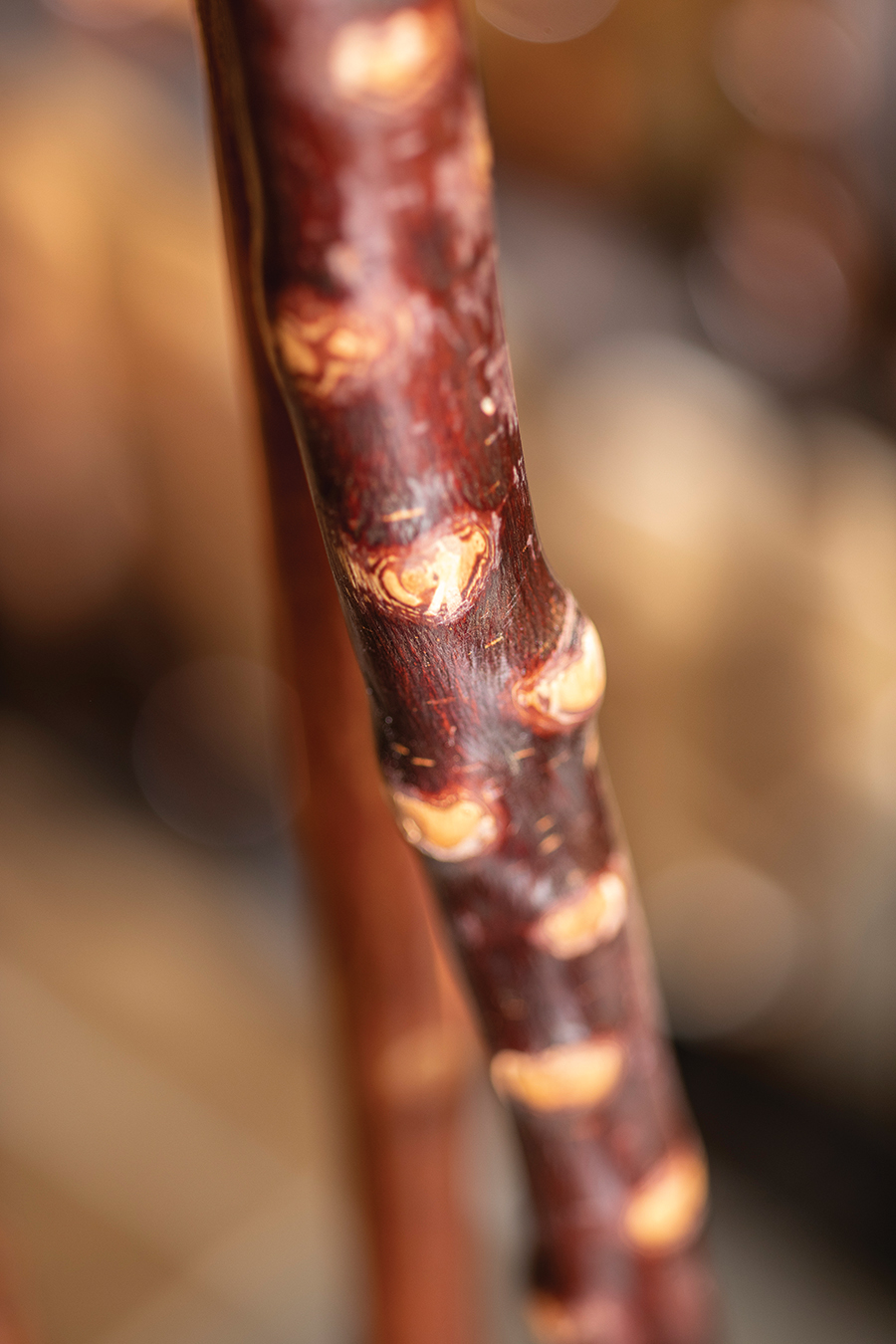
He chose an ash limb to complement his first ram’s horn handle. An older guy had shown him how to work the bony spikes of a Jacob sheep, a black-and-white breed known for having two sets of horns, one curled beside the ears, another pronged atop the head.
When John saw a ram’s head at a slaughterhouse where he’d gone to pick up food for the dogs, he asked for a curled horn.
Back in his shed, he heated the horn with a blow torch to make it pliable, then wrapped it around a steel form to set the distinctive shepherd’s hook shape. It was wide enough to snare a sheep by the neck but gentle enough, with a curlicued end, not to dig in.
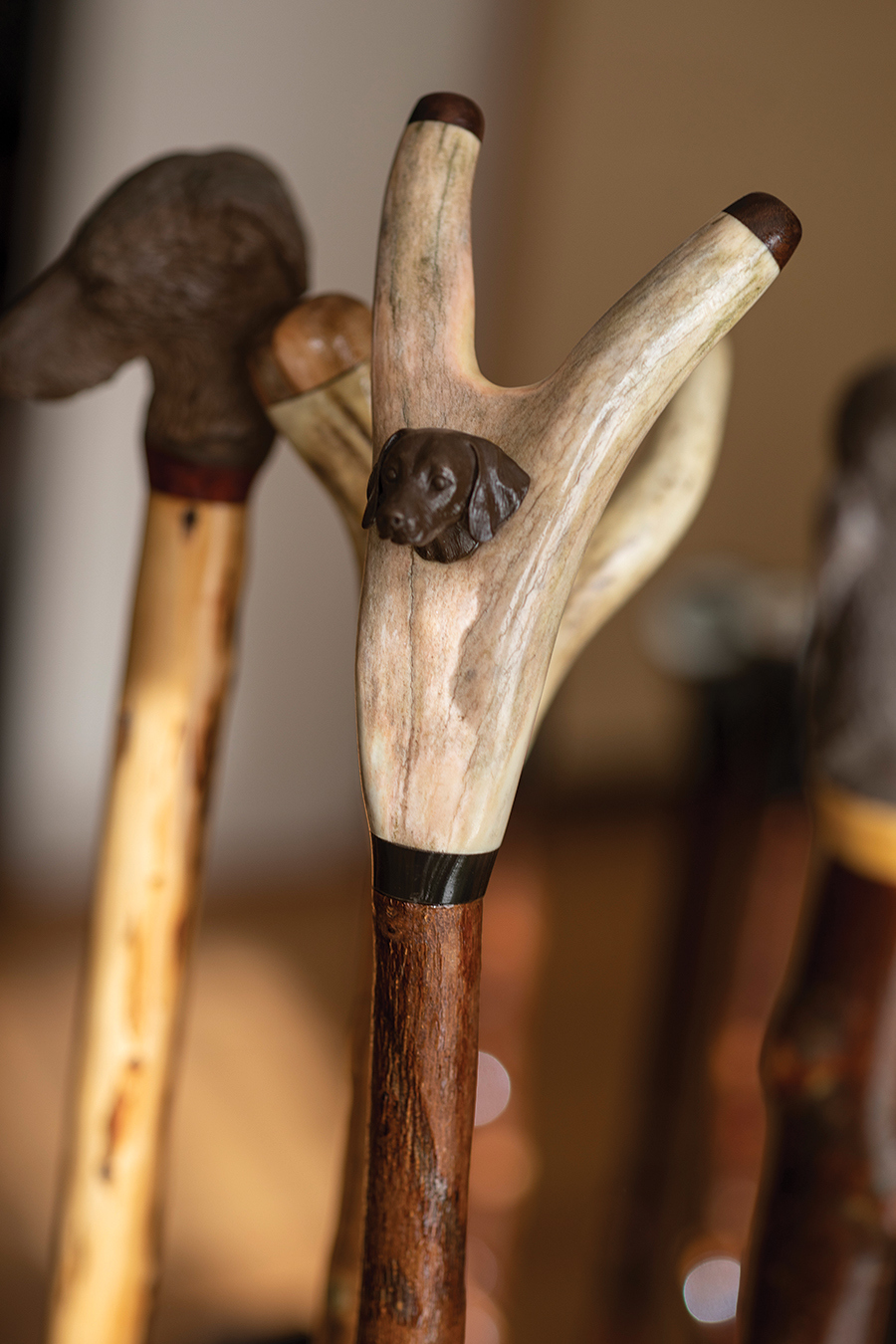
“It’s a long process,” Broadhurst says. “You’re messing with it and messing with it, you know? Once you get the shape, you can start polishing it, sanding it, filing it and finishing it off with wire wool.”
He points to the subtle pits in the ebony surface: “This wasn’t a real good horn, you see, but it was good enough,” he says. “You gotta take what you find, you know what I mean?” He joined handle and stick with a threaded steel rod. A white spacer of deer horn, found in the wild, bridged the gap, adding ornament and strength.
Ever keen to improve, he honed his knack for sticks and hounds. He managed a champion pack of hunting beagles on foot until a rogue and riderless horse trampled him in 1997, mangling his left leg and ending his time with the hunt. He fell back on the trade he’d learned as a teenager, laying stone. He kept his hand in the dog game by judging shows around the world.
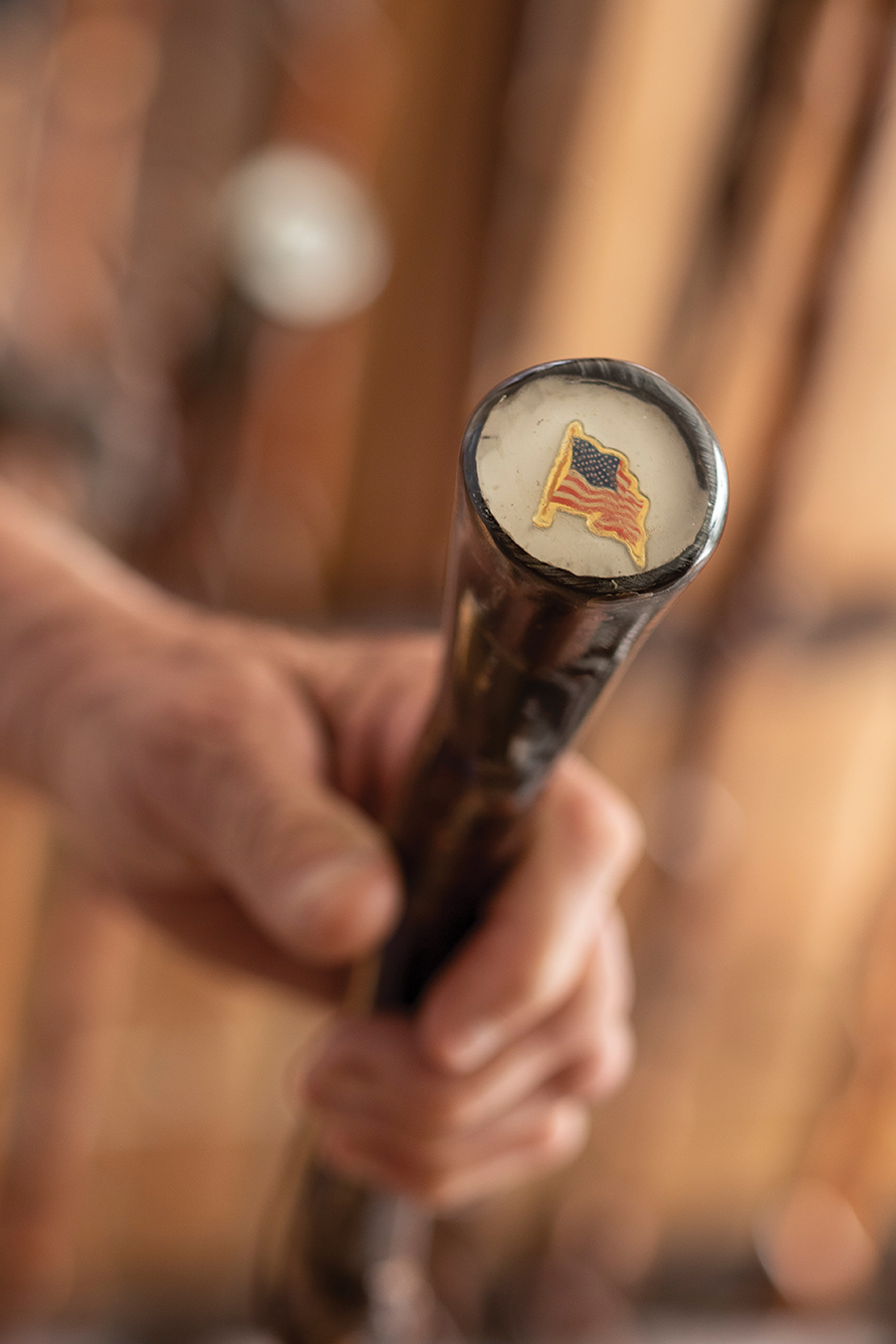
He met his wife, Susan, the manager of a veterinary clinic, at a Jack Russell terrier show in Mocksville. She was handling. He was taking note.
Today, they live south of Winston-Salem, in a double-wide mobile home that John has clad with a handsome yellow knock-off of chiseled English Yorkstone.
He’s trying to retire from stone, but folks keep calling him about chimneys and patios and gate piers. He still judges dog shows. And he still plays with hardwood in the stretchy hours of winter evenings, when the pens of Plott hounds and Jack Russells that he and Susan keep and call by name have piped down.
He’s gotten pretty good at making walking sticks, he allows, but he’s a novice compared with stick makers in England. He springs up from a chair and returns with a small, slick magazine published by the British Stickmakers Guild. On the cover is a finely carved handle painted in jewel tones. A peacock’s head. He flips to likenesses of rosy rainbow trout and dagger-beaked woodcock. He shakes his head in awe of the craftsmen.
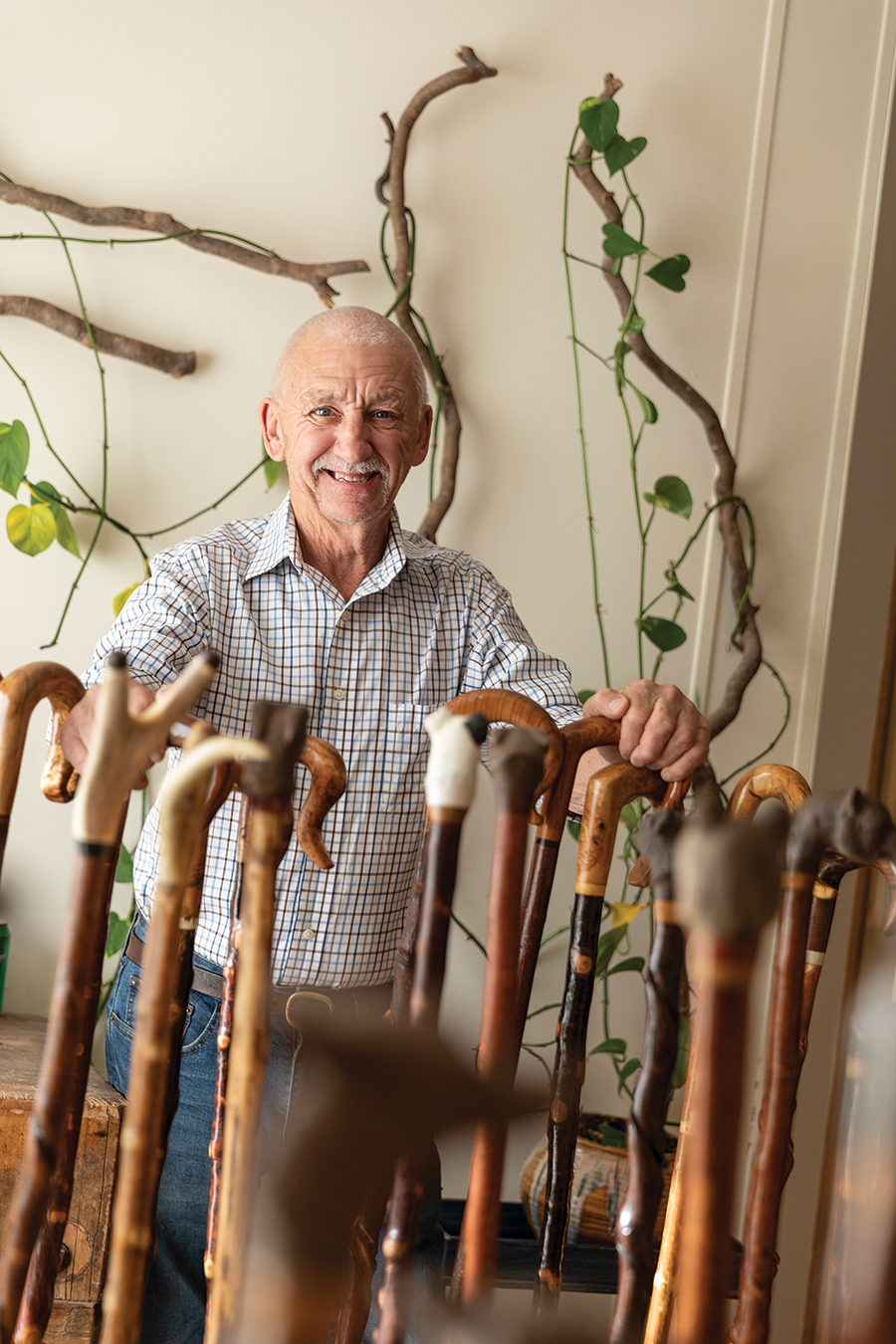
“Some of them lads, that’s all they do, you know what I mean? Some of them are absolutely brilliant,” he says.
There aren’t many stick makers in these parts, he adds with a crooked smile, so it’s easy for him to look good. He makes maybe 70 sticks a year and sells most of them — at prices ranging from $85 to $170 — at hound shows and steeplechases. He also sets up at WGHP-TV’s Roy’s Folks Craft Fair that’s held in High Point whenever COVID is in check, which hasn’t been for a couple of years now.
Buyers marvel at the variety of his designs.
Dark sticks and light sticks.
Sticks with resin handles cast in the shape of dogs’ heads.
“Thumb sticks” with notches at the top.
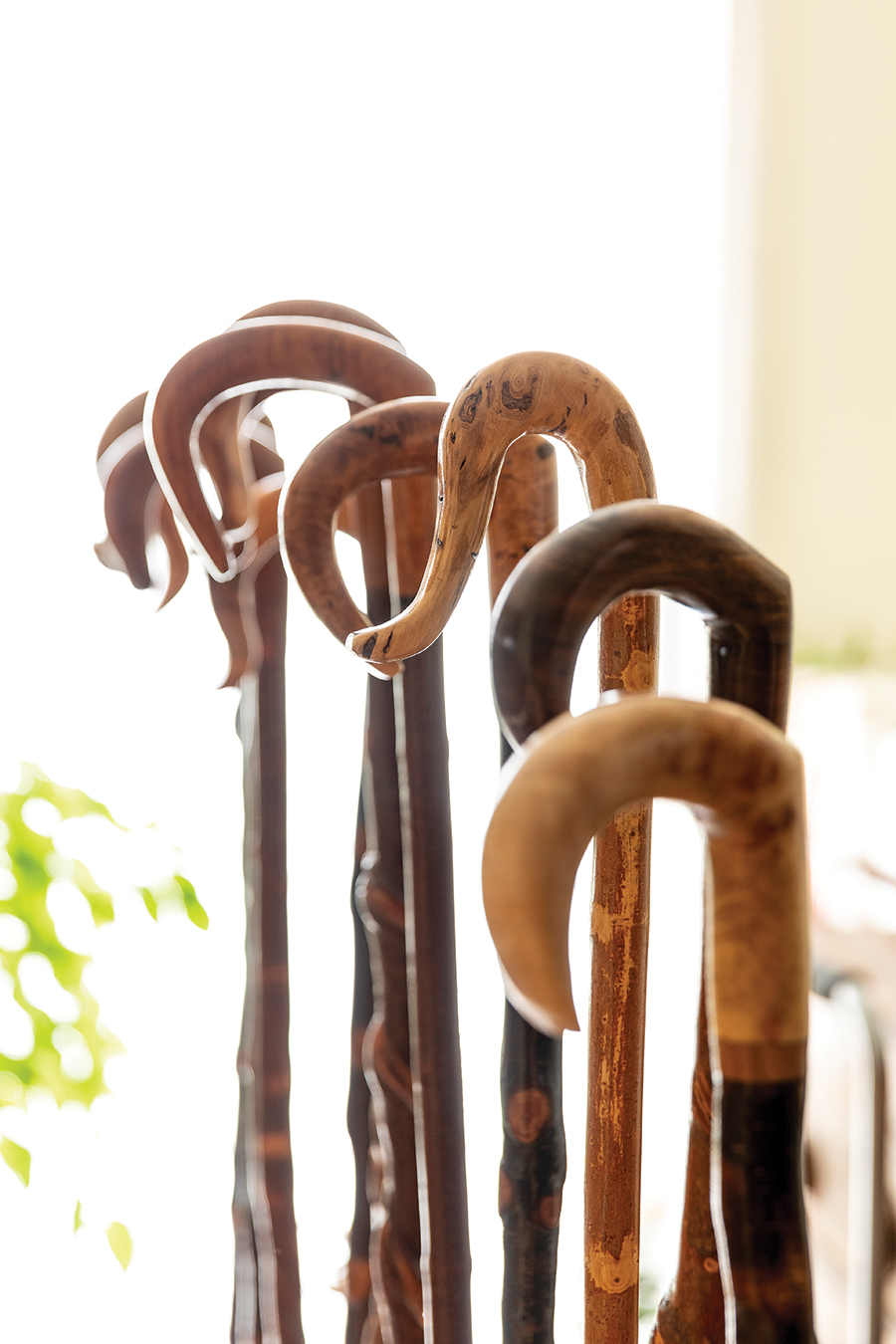
Sticks capped with deer antler, cow horn and burled wood.
Sticks that end in wooden whistles.
He blows a cheery note. “People use them to call their dogs and the like,” Broadhurst says.
The special stick, the one with a ram’s horn handle, will never sell because he’ll never offer it for sale. “You keep your first one like that, you know?” he says.
He’ll never use it, either. His favorite stick to use is what he calls a “nothing stick.” He pops out of his armchair again — he and stillness don’t mix well — to another rack of sticks. He hikes up a white-elm rod topped with twist of spalted maple. The handle is dark with the oil of his hand.
“That’s my favorite stick,” he says grinning like a boy who’s riding his bike after the horses and hound songs. “Just nothing at all.” OH
To learn more, contact John Broadhurst at jjbluebear70@gmail.com.
Maria Johnson is a contributing editor of O.Henry. She can be reached at ohenrymaria@gmail.com.

